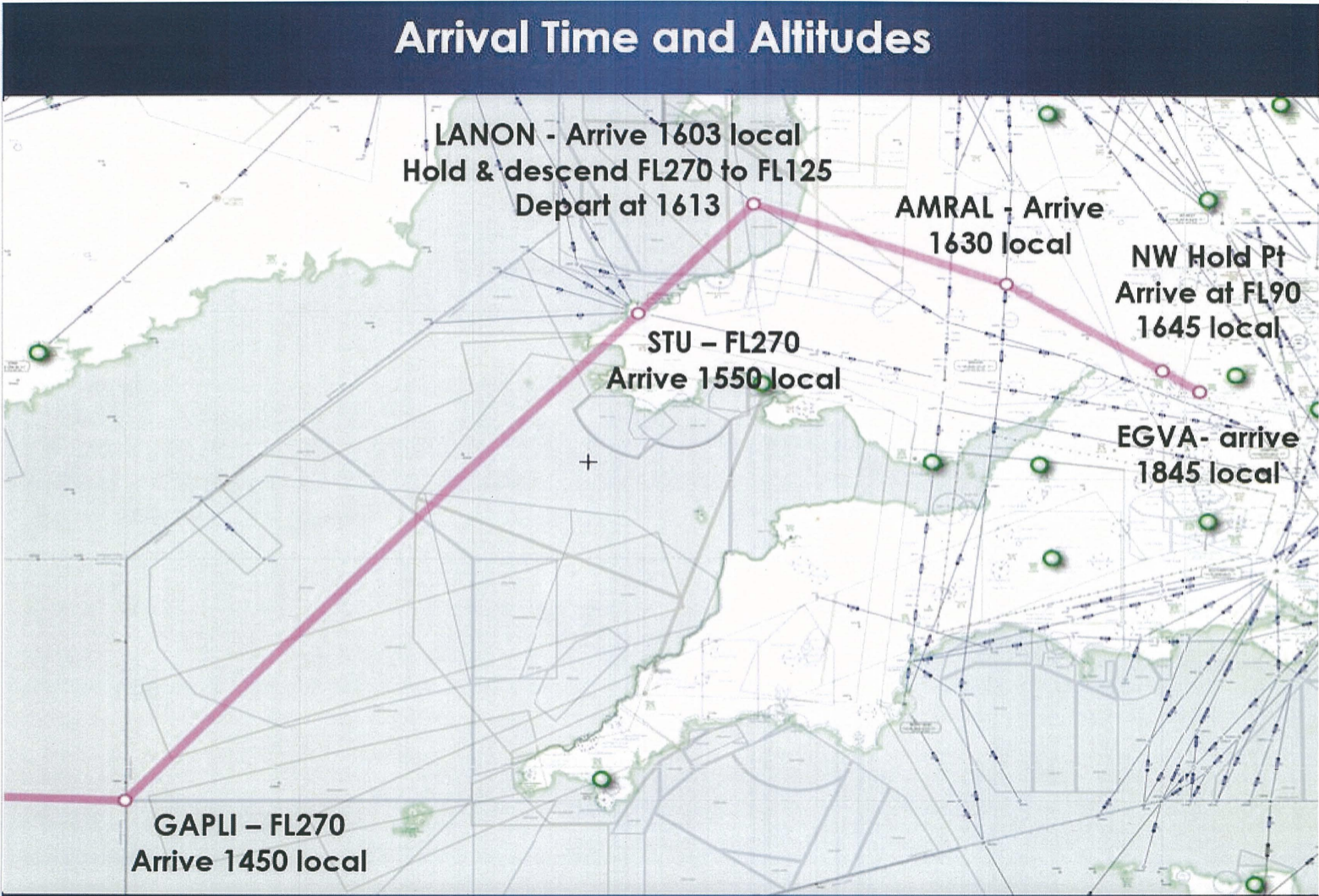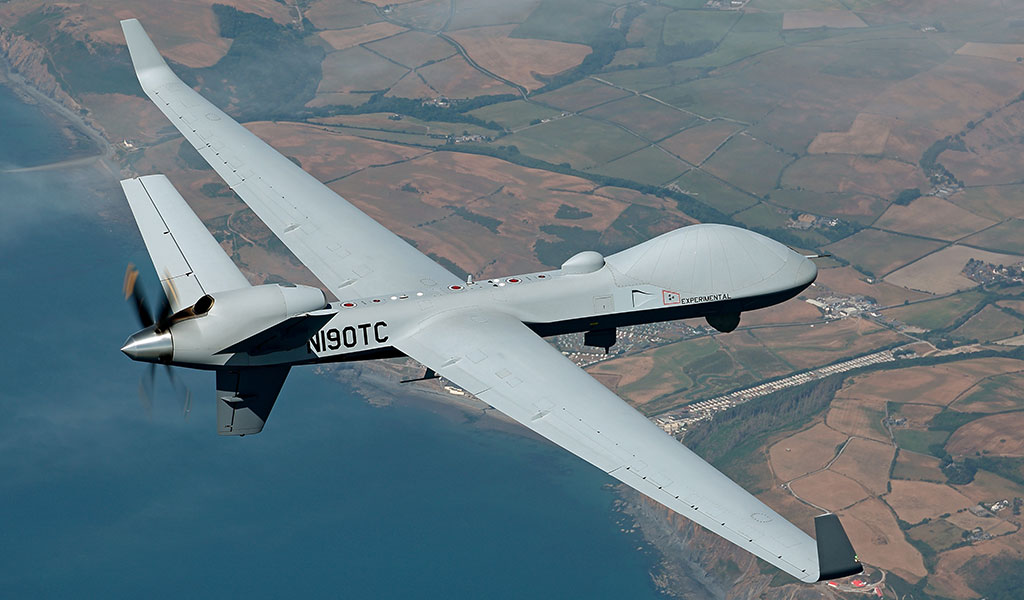Music
Trailers
DailyVideos
India
Pakistan
Afghanistan
Bangladesh
Srilanka
Nepal
Thailand
Iraq
Iran
Russia
Brazil
StockMarket
Business
CryptoCurrency
Technology
Startup
Trending Videos
Coupons
Football
Search
Download App in Playstore
Download App
Best Collections
Technology

The novel coronavirus is raging across the planet. Millions are quarantined, the stock market is violently gyrating and one of the preeminent VC firms in the Valley is back to saying RIP Good Times. The daily stream of news is terrifying, and we are going to learn even more in the coming weeks.
For founders, the biggest challenge is inoculating their teams from the vagaries of the market so they can do their jobs, continue building momentum against this market adversity and, ultimately, ensure there is enough cash in the bank to avoid layoffs and sustain their company for growth.
I want to talk today about the money details, saving some of those other topics for future posts. What does VC fundraising look like today? Whatgoing to change in the VC market? What might actually get better about fundraising today than just a few months ago? The daily headlines can be traumatizing, but with the right approach, you can navigate these waters safely.
Volatility affects different VCs differently
- Details
- Category: Technology Today
Read more: The dollars and cents of raising VC during the coronavirus pandemic
Write comment (93 Comments)Facebook latest colonization of Instagram has begun. Facebook is testing the option to cross-post Stories to Instagram, instead of just vice-versa. Hopefully, that means the two apps will finally sync up the &already viewed& status of cross-posted Stories so we don&t have to watch re-runs any more, as I harped about in January.
If fully launched, the cross-posting feature could save social media managers and average users time while letting them maximize the views on the content they create. It could also give a little boost to the total Stories available on Instagram so its algorithm has more to choose from when ranking what it shows first.

But the change could also been seen as the most invasive injection of parent company Facebookidentity into Instagram — which has been steadily increasing since Instagramco-founders left the company in late 2018 as their autonomy dwindled. Facebook has already pasted an &Instagram & From Facebook& title screen into the photo-sharing appboot-up phase, and added an Open Facebook button to its settings menu. Instagram added cross-posting of its Stories to Facebook in October 2017, allowing its parent to piggyback on the popularity of its ephemeral content.
Facebook Stories, Instagram Stories and WhatsApp Status all had 500 million daily users as of a year ago, while Snapchat as a whole has just 218 million users.
The screenshot of the Facebook-to-Instagram cross-posting feature was generated from theFacebook for Androidapp code by Jane Manchun Wong. Shethe renowned reverse engineering expert who has furnished TechCrunch with tips on dozens of unreleased features that went on to officially launch. When you&ve shot a Facebook Story and are about to post it, you can tap Privacy to review who you&re sharing with. In addition to the Public, Friends, Custom and Hide From options, Facebook is testing a Share To Instagram toggle that appears to turn on continuous cross-posting of that post and future ones.
A Facebook spokesperson tells me that the company is now formally testing the cross-posting feature to make it easier to share moments with the people who matter to you, as people might have different audiences and followers on Facebook versus Instagram. Facebook will continue to explore options for simplifying and improving how Stories work across its apps. That means itout of the internal-only prototyping phase and is now being tested with users in the wild.
With any luck, Facebook and Instagram will eventually sync up data about which Stories you&ve watched on either app, and avoid showing you exact copies of ones you&ve already seen. I made my case for this to Instagramleadership at a recent press dinner, noting how reruns waste hundreds of millions of peopletime and lead them to close Stories or the app altogether. I asked Facebook about that specifically; they declined to comment.
Creating two-way interoperability of Stories is a precursor to Facebookefforts to unify its Messenger, WhatsApp and Instagram Direct chat features. That could extend end-to-end encryption across the apps, protecting messages from prying eyes. But therebeen government grumbling about how encryption could hide the activity of criminals, and some see intertwining the chat features as a way to make it harder for regulators to break up Facebook.
- Details
- Category: Technology Today
Read more: Facebook Stories tests cross-posting to its pet, Instagram
Write comment (99 Comments)Reddit, the popular discussion site visited by more than 430 million people per month, is opening up some of its most valuable screen real estate to advertisers with the launch of its first trending ad product, the Trending Takeover. The new ad unit will allow brands to reach visitors on two of the most heavily visited areas of Redditwebsite: the Search tab and the Popular feed.
The ad format allows the brands& campaigns to run across the largest trends on Redditsite for 24 hours, Reddit says. The trends section is where users can see whatcurrently buzzing and being discussed across the site, similar to the Trends section on Twitter, which can also be targeted by advertisers.

Reddit already offers advertisers the ability to run campaigns across its site in order to raise brand awareness, drive conversions or generate website traffic, app installs or video views, among other things. But the new Trending Takeover ad product will allow brands to reach even more potential eyeballs, as Reddit says the Popular feed alone is used by a third of the sitevisitors daily, and the Search tab also reaches millions every day.
In addition to the increased visibility, the benefit to this sort of ad format is that a campaign can be designed to align with whatbeing talked about in real time during the day it runs. For instance, a brand could run a trending ad on the day their brand became a part of the trending section organically.
According to eMarketer, Reddit was forecast to generate $119 million in net U.S. ad revenues in 2019, giving it a 0.1% of the overall U.S. digital ad market. But the analyst firm believes that figure will more than double, to $261.7 million, by 2021, noting how the company continued to roll out new formats like its autoplay in-stream video, cost-per-click, Top Post Takeover slots and more.
&With millions of searches taking place every day and over one-third of users coming to RedditPopular feed daily, brands can now be part of where cultural trends are born online — Reddit,& said Shariq Rizvi, vice president of Ads Product and Engineering at Reddit, in a statement. &For Reddit, a large focus for 2020 is about maximizing new and premium opportunities for brands to authentically engage with Reddit users,& Rizvi added.
In beta tests of Trending Takeover, Reddit worked with more than 15 partners across entertainment, consumer tech, CPG, automotive and QSR verticals, it says, including Spotify,Method and Adobe.The company claims these early testers saw both an increase in conversions and click-throughout rates that were two times more than industry standards for social.
For example, Method used a combination of hand-picked keywords and its own custom creative on the Trending Takeover landing page and saw click-throughs at over two times industry standards. It also was able to use the format to drive video views with a completion rate of four times that of Redditusual Promoted Posts format. The brand had specifically targeted communities like r/houseplants,r/gardening and r/malelivingspacefor a campaign about its household cleaners.

According to a media buyer cited by AdWeek, Promoted Trends on Twitter can cost around $250,000 per day, although pricing is customized. Redditnew Trending Takeover ad would probably be a minimum of around $100,000, they estimated. Reddit was not confirming pricing.
Reddit says itnow selling Trending Takeovers on a reservation, not programmatic, basis. The ads run on both desktop and mobile.
- Details
- Category: Technology Today
Read more: Reddit takes on Twitter with its first trending ad product
Write comment (93 Comments)Two years ago, dormmates Justin Wenig and Nicholas Diao struggled to get into a popular computer science class at Columbia University . The duo eventually got into that class, but after the initial frustration around class scheduling, they decided &it was an obvious problem for a computer to solve.&
Wenig and Diao are the founders of Coursedog, a software startup that wants to create an operating system for universities to better schedule classes, professors and sections based on demand and interest. &Think of it,& Wenig said, &as a Superhuman for class scheduling systems.&
Today, Coursedog announced it has raised $4.2 million from a crop of investors, including First RoundJosh Kopelman. The company did not disclose any other investors, and there were no board seats taken on during the financing round. The Y Combinator graduatetotal known venture capital funding is now $5.7 million. Investors in the company include FoundersX Venture, EFund and Jinal Jhaveri, the former CEO of SchoolMint, a school enrollment startup.
The funding will be used to build out Coursedogproduct line on projecting course demand, the correct number of seats a school should offer per course and student success.
&A lot of people think higher [education] is a slow institution, but institutions are really thinking about how to promote student success,& Wenig said in an interview with TechCrunch. But instead of adopting any technology, universities are careful about sharing protected data, he continued.
Competition-wise, Wenig said that Blackboard, a learning management startup, continues to be one of the two &big software tools within universities.& Coursedog sits on top of the other software tool: the student information system, used by administrators that need to plan student schedules.
After Wenig and Diao cold-called hundreds of colleges, Columbia Law School was the first contract signed. Since then, the startup has landed deals with more than 60 colleges and universities of all sizes.
Coursedogclientele fits a range. The smallest client, per Wenig, is the Laguna School of Art and Design, which has roughly 600 students. Wenig also noted they cater to a mix of public and private schools, with public schools often &being the most innovative.&
&A lot of states offer incentive-based funding,& Wenig said. &In Utah, the amount of funds you might get from the state as a public institution is directly proportional to how well you&re using your space on campus.& He claims that Coursedog helps improve graduation rates by getting more students into the right classes.
&Today, we are just building apps on top of the Student Information System to help schools with scheduling, curriculum planning and catalog publishing and are slowly eating away functionality that schools would normally be doing with spreadsheets and native to the SIS,& he noted.
Coursedog plans to scale to 100 more universities in the next year, and will use the new funding to help &grow up& its production.
- Details
- Category: Technology Today
Read more: Coursedog lands $4.2 million to make class scheduling smarter
Write comment (97 Comments)
The tradition of sitting through a barrage of ads in exchange for being entertained began with radio, flourished with the arrival of television and followed the mass migration online.
As the massive $35 billion in advertising revenue captured by YouTube and Instagram in the last quarter indicated, online advertising around social media, influencers and streamers already represents roughly half of the total amount spent on television advertising at its 2018 peak of $72.4 billion.
Entertainment businesses are under enormous pressure to create new revenue models as linear advertising becomes less relevant to consumers, a potential harbinger for another boom in advertising technology as companies try to keep audiences engaged.
Instagram $20 billion advertising haul, first reported by Bloomberg, comes as Alphabet, Googleparent company, disclosed advertising revenue of $15.1 billion at its YouTube subsidiary for the first time.
Taken together, those figures mean that the market share of advertising commanded by television may shrink to a quarter of all advertising spending sooner than the 2022 prediction from eMarketer, as reported in MarketingLand. While search on Google and Amazon are clear winners — as is Facebook — other technology companies are likely to see a windfall as advertisers chase consumers to new places.
- Details
- Category: Technology Today
Read more: TV advertising didn’t die, it just moved online
Write comment (100 Comments)The Royal Air Force delayed safety warnings about the first transatlantic flight of a new Reaper aircraft in 2018, over fears that they could tip anti-drone protestors to its arrival in the U.K., according to emails seen by TechCrunch.
On July 11, 2018, the General Atomics SkyGuardian, a variant of the U.S. Reaper drone that killed Iranian military leader Qasem Soleimani in January, flew from Grand Forks, N.D., to RAF Fairford in Gloucestershire. This was the first and only time that a drone had made such a journey through U.K. civilian airspace, and it paved the way for an even more ambitious test due to happen in the U.S. later this month.
The 5.5-metric ton aircraft was remotely piloted throughout its 24-hour journey using satellite communications to relay video, instrument data and air traffic control instructions to pilots at General Atomics& airbase in North Dakota.
The historic flight, which passed directly over Hereford and Gloucester, concluded without incident at RAF Fairford, where the drone went on static display during the Royal International Air Tattoo, a military air show.
General Atomics chief executive Linden Blue said: &The successful flight of the [SkyGuardian] is the culmination of the hard work and innovation of our dedicated employees, and the strong relationships that we enjoy with the RAF, the U.K. Civil Aviation Authority (CAA), the Royal International Air Tattoo and our U.K. industry partners.&
However, emails obtained under U.K. Freedom of Information legislation, and first reported by The Guardian, show that those relationships were tenuous at best, with the CAA distrusting General Atomics, questioning the U.S. Federal Aviation Administrationoversight of the SkyGuardian and facing sustained pressure from the Ministry of Defence to delay safety measures.
The CAA, the U.K.aviation regulator, supplied more than 1,600 pages of emails regarding the flight. All were heavily redacted, including most names and job titles.

Plan for the final leg of the SkyGuardiantransatlantic flight, travelling between Ireland and England, then flying over Wales to land at Fairford airbase (Credit: General Atomics/CAA)
It is unclear who first suggested a high-profile transatlantic Reaper flight to mark the RAFcentenary and showcase the new drone at the Air Tattoo. But by early February, the CAA was already warning of pressure from the military to allow the flight.
&We will need to be fully satisfied that the flight can be conducted in a safe manner before we will approve this,& wrote a CAA manager to Mark Swan, then the regulatordirector of Safety. &Note that there is likely to be extensive interest from MoD sources… and hence some higher level pressure focussed on the CAA for this flight to take place.&
That is because the RAF is in the process of procuring 20 next-generation Reaper drones from General Atomics in a deal worth more than £1.1 billion (US$1.4 billion). These drones, which the RAF will call Protector, are a military version of the SkyGuardian that undertook the transatlantic flight.
The RAF already has 10 Reaper drones, a larger and more heavily armed variant of the Predator. Since 2008, these have been used to carry out hundreds of deadly strikes in Afghanistan, Iraq and Syria. While these drones are remotely controlled by RAF pilots in Nevada and Lincolnshire, the Reapers are not allowed to share civilian airspace with passenger jets. This means that they have to be based very near to where they operate — an expensive and limiting requirement.
A drone like the SkyGuardian that could fly amid commercial aircraft for many thousands of miles would enable the RAF to attack targets across much of the world from the bases in Britain. &A drone that can fly in a civilian airspace is so much more versatile,& says Arthur Holland Michel, co-director of the Center for the Study of the Drone at Bard College in New York.
When the Protector drones enter service in the U.K. in 2024, they will carry two British-made weapons: a GPS- and laser-guided bomb called the Paveway IV; and a semi-autonomous missile called Brimstone. Although the transatlantic drone would be unarmed, the RAF saw it as a potentially lucrative sales demonstration for other countries.
&The eyes of a number of potential customer nations such as [Australia] and [Canada] will be on the event and the outcome could be significant for UK prosperity,& wrote the RAFprogram manager for Protector in an internal email to the MoD.
The CAA was skeptical from the outset. &The general impression of General Atomics… is that they will try to ‘push the limits& and over promise in many areas,& wrote a safety official in March. &We need to tread really carefully on this one & the fact that MoD is involved is not a reason for us to roll over and just let this happen.&
The regulatorconcerns were simple. How would the aircraft know where it was? How would pilots thousands of miles away know what was happening around the drone? And how could they ensure they had control of it at all times?
The CAA has an exhaustive procedure for assessing the safety of aircraft, and another long list of requirements for allowing drones to take to the skies above Britain. There was no way that the SkyGuardian could be properly tested by the U.K. regulator in a few short months before the planned flight in July.
Instead, General Atomics could apply for an overflight exemption — permission for a single flight on a given day. This exemption would rely on another credible organisation attesting to the airworthiness of the aircraft, in this case, the U.S. Federal Aviation Administration (FAA).

The problem was that the FAA had itself placed severe limits on how and where the SkyGuardian could operate. It usually required the SkyGuardian to have a visual observer spotting for the drone from a nearby chase plane whenever it was below 18,000 feet. The FAA also banned the drone from flying over most densely populated areas.
&I do not really see how such limitations would… allow the aircraft to commence the first part of its flight out of the United States, let alone over Canada and then into the oceanic system,& wrote a CAA safety official to General Atomics. &The limitation regarding overflight of densely populated areas… will bring in additional problems within the UK (which is already quite densely populated).&
For its part, the FAA insisted that its authority finished at the edge of American airspace. &Whether manned or unmanned, [we] cannot provide any sort of safety statement that would ensure safe operations in UK airspace,& wrote an FAA official to the CAA in March.
&If General Atomics can&t get the FAA to back up the safety of the aircraft, then why should we be letting it into our airspace?,& wondered one CAA official.
It seemed as though the same thought had occurred to authorities in Ireland. The shortest route for many transatlantic flights between the U.S. and the U.K. is directly across Ireland. However, a track of the SkyGuardianroute shows a distinct kink to keep the drone out over the Atlantic and the Irish Sea.
In April, a CAA airspace official reported a phone call with their counterpart at the Irish Aviation Authority: &I explained why the decision was made to route south of Irish landmass… However, due to how the Irish will be segregating the airspace and in addition to the commercial traffic routing across the Atlantic, they have requested that [SkyGuardian] now routes [even] further south.&
In aviation, segregation is when an aircraft does not fly in close proximity to other planes but instead has a corridor carved out for its sole use. Although General Atomics& ultimate aim is for the SkyGuardian (and the RAFProtector) to use advanced sensors to autonomously detect and avoid hazards, the entire transatlantic flight would take place in segregated airspace, at least several miles from other aircraft.
Even so, the FAA would have had to adjust the SkyGuardiandomestic certification to allow it to fly over cities, and without a chase plane. &In its current format and limitations there is not a lot the CAA can do with this,& wrote a CAA official. &We need to sit down and discuss this, as there are political forces at play here and [we are] getting a lot of pressure from the MoD.&
Eventually, the FAA relented, relaxing the SkyGuardianrestrictions for the transatlantic flight. It does not appear that the CAA had any say in setting those conditions, which were redacted in the CAA emails. However, the drone flew directly over the city of Gloucester and did not have a chase plane.
Following a meeting about the proposed flight in early June, one CAA official reported that the regulator was &simply taking the FAAexperimental certification and ‘anglicising& it.&
Now that the flight seemed as if it would actually happen, attention within the RAF and CAA shifted to public relations.
Although the SkyGuardian would be displayed at the Air Tattoo with British bombs and missiles, the RAF wanted the flight and SkyGuardian to sound as innocuous as possible. RAF High Command edited an article intended for the defence publication Janeto remove references to the SkyGuardianlarge weapons load and its ability to &greatly [compress] the sensor to shooter kill-chain between detection and an armed response.&
&I have cut out the weapons bit as this detracts from the article and moves focus from the achievement of the flight to how easily we can kill people,& wrote an RAF officer. The same officer also added a paragraph about how the SkyGuardian could provide humanitarian assistance, disaster relief, coastal surveys, search and rescue and even monitor flood defences.
&This is all part of the narrative that [remote piloted aircraft] are a good thing and I am keen to keep the wind out of the anti-drone lobby sails,& he wrote.
General Atomics was now excited to announce the upcoming flight as quickly as possible. But on June 11, a CAA official noted that a press release from General Atomics had been blocked by the MoD &due to concerns about the potential for &anti (military) drone& protests hampering the arrival at Fairford if the flight is publicised too early.&
A week later, the MoD suggested that the CAA only announce the 4,300-mile transatlantic crossing just six days before the flight itself.
&We have significant concerns this is too late,& complained a CAA official to Mark Swan, its head of safety. &[We] endeavour to provide at least 60 days& notification of large airspace restrictions to notify other airspace users… The longer we leave to notify, the higher the risk of airspace infringements.&
A particular worry was a British Gliding Association competition scheduled to take place just 10 miles from the SkyGuardianairspace on the day of its flight. If one of the gliders should stray into the dronepath, it could risk a catastrophic collision.
&Sadly, I have had a huge kickback from the RAF regarding going public,& wrote another CAA official. &I have been informed that the RAF [is trying to] delay this as long as possible…. Patience is running thin thanks to the MoD.&
Ultimately, the CAA disregarded the militaryconcerns, and issued its airspace warning at the end of June. Only one decision was left to be made: What should the SkyGuardian be called?
One CAA airspace expert suggested calling it nothing at all, with the warning vaguely referencing &a civilian aircraft, certificated and registered through the FAA… to mitigate the risk of anti-drones protests for [the] MoD.&
Another CAA official agreed that the word &drone& should be avoided wherever possible. &[We can] refer to it as either an Unmanned Aircraft or as a Remotely Piloted Aircraft… I believe the terminology of ‘drone& does not fit this aircraft for a number of reasons.&
RAF High Command concurred, with an RAF officer writing: &It is clear from our teamwork that we are all consistent and clear on each otherpriorities moving forward, particularly with the incorrect use of ‘drone&.&

Experimental SkyGuardian drone flying over the UK on the first ever transatlantic drone flight through civilian airspace (Credit: General Atomics)
At last, the CAA and the RAF could agree on something. Whatever flew uncrewed from America to Britain, with its remote pilot, satellite control and ability to carry multiple precision-guided weapons, it certainly wasn&t a drone.
The flight itself went pretty much to plan. The SkyGuardian took off from Grand Forks just after midday on 10 July, and flew through the night at 27,000 feet over Canada and the North Atlantic on a meticulously charted route. Pilots in North Dakota, controlling the SkyGuardian in shifts, connected with U.S., Canadian, Irish and British air traffic controllers.
Arriving off the coast of Wales, the SkyGuardian descended into a holding pattern above Cirencester before coming in to land at Fairford, using an automated landing system. There were no anti-drone protestors waiting to greet it.
After the Tattoo was over, the SkyGuardian was dismantled and flown back to the U.S. as cargo, its mission complete.
In January 2019, General Atomics announced that defense contractor BAE Systems was developing a plan for regular RAF Protector operations in U.K. civilian airspace. In November, the Australian government announced that it would spend $1.3 billion Australian dollars (£670 million) to acquire a fleet of SkyGuardians as its next unmanned aerial vehicle. Canada and Greece are also reported to be considering purchasing the aircraft.
But the jewel in the crown for General Atomics is the U.S. market. On March 23, a SkyGuardian equipped with an experimental autonomous detect-and-avoid system and a cutting-edge surveillance radar will take to the skies above Southern California, fully integrated with normal air traffic control for the first time. According to a filing with the FCC, it will fly for over 100 miles, conducting aerial inspection and surveillance of &critical infrastructure owned by commercial and civil entities.&
&This type of commercial mission has never been done with a [drone] anywhere in the United States,& wrote General Atomics. &It is a first of its kind and will serve as a proof of concept for future… missions.&
If the test goes well, military and commercial Reapers and SkyGuardians could soon start flying over U.S. cities, either on their way to foreign war zones, or with their tireless digital eyes gathering data on America itself.
- Details
- Category: Technology Today
Read more: The risky first transatlantic flight of a Reaper drone
Write comment (98 Comments)Page 1289 of 1444

 16
16





